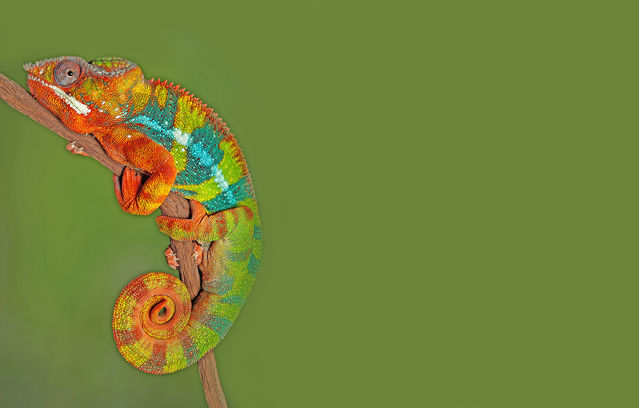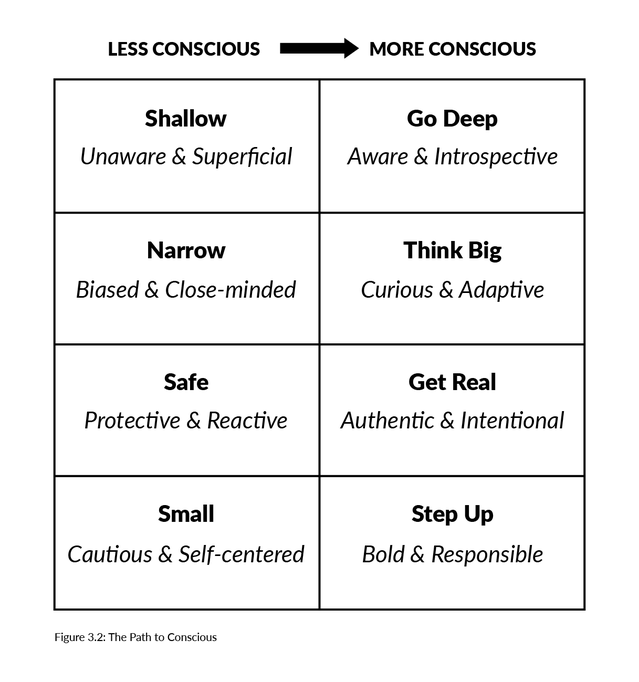Career
Conscious Is the New Smart
In today’s environment of accelerated change, smart is not enough.
Posted June 27, 2018

In today’s environment of accelerated change, smart is not enough. Being conscious is the new smart.
Being conscious provides the road map to help you adapt, transform, and accelerate into the future—a new approach for living and leading. Our research has found that the most successful people and leaders follow four powerful practices of being conscious: Go Deep harnesses the power of introspection; Think Big helps us see a world of possibilities; Get Real allows us to tap our accelerators and manage our hijackers; and Step Up enables us to act boldly and responsibly.
Here’s more on the first of the four practices and how it can help us become more conscious in all aspects of our lives.
Go Deep to Discover Your Inner Self
Like race horses at the Kentucky Derby, we navigate our fast-paced world by wearing metaphorical blinkers that blind us to a greater awareness of what’s around us. By Going Deep, you can remove those impediments and build a greater awareness of yourself and others, develop a more open mind, and find creative ways to cope with the speed and uncertainty of change.
It’s easy to lose our center and, as a result, easy to be blown around by the winds of change. To get centered and discover your real self, you need to take a 360 approach to self-awareness—looking at yourself, others, and your surroundings.
We also need to look clearly at the cards we’ve been dealt and understand how to handle them. There are four such cards:
Our genetic makeup. That determines your physical vulnerability to stress and disease, as well as how you’re inclined to handle anxiety and stress. But, you don’t have to let your genetic makeup define you entirely.
Our childhood and family development. The more aware we are of our early attachments and childhood experiences, the less hijacked we become by those elements in the future.
Life experiences. While they influence who we become, we need to understand the resulting behaviors and reactions that serve as triggers within ourselves.
Our personalities. To strengthen our self-awareness, we must understand our deep-seated beliefs and the personal stories we tell ourselves about the circumstance of our life events.
Going Deep also requires learning to tap into your innate wisdom—your natural intelligence and sensibility. That can give you the confidence you need to move forward, especially when times are tough. Doing so calls for opening your heart and your mind, both expressions of the better angels of our nature—love. At the same time, for your own protection, you must learn to tap your inner resources, such as persistence and self-control.
But there’s one particularly tricky stumbling block most of us face and it lies in the workings of our brain. The neocortex, home to our more complex, cognitive thinking, and the emotional part of our brain, which controls our feelings, aren’t the problem. More troublesome is the reptilian part of our brain, the oldest and most primitive area that controls the body’s vital functions and has been programmed to detect danger. It’s easy to get hijacked by our reptilian brain and, as a result, to allow fear to take control of our reactions. Being more conscious of irrational fears will help you let them go.
Another step is to build a healthy foundation. By planting seeds that ground yourself, you strengthen the roots that protect you from the winds of change. These are our roots for conscious living: how you live (physical), how you feel (emotional), how you think (intellectual), how you interact (social), how you perform (vocational), and how you see the world (spiritual). Truly interdependent, our roots work together to nourish our mind and our heart.
How can we deepen our roots?
By hitting the pause button regularly. That should include:
- Taking deep breaths
- Learning to meditate
- Focusing your mind on solving a problem
- Doing something that matters every day
Finally, all of us have conversations with ourselves that keep us stuck in old patterns and shackled by dysfunctional habits. Like old baggage, you need to toss aside negative attachments, such as the need for stability or a penchant for clinging to the past, and learn to travel light, no longer weighed down by toxic emotions that get in the way.





